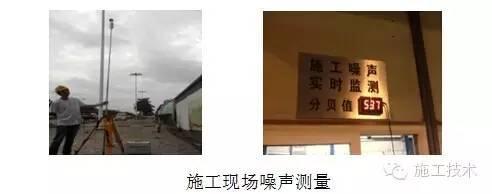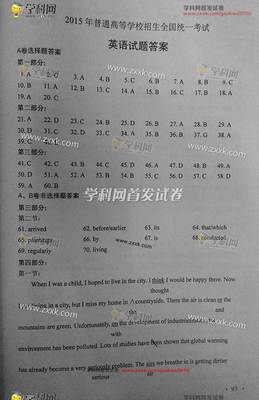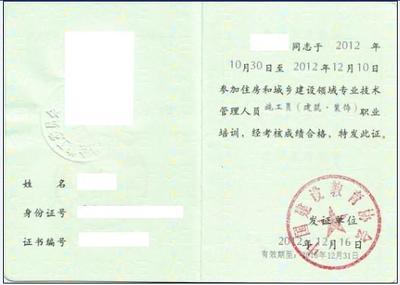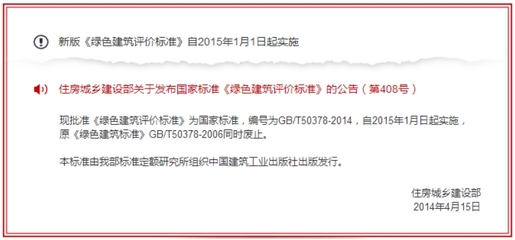《绿色建筑标准》室外光污染检测项目的建议
国外的绿色建筑评价标准对“光污染”提出了要求。美国绿色建筑评估体系(LEED)认证中可持续场地评价中里面包括减少室外光污染。英国绿色建筑评估体系(BREE-AM2008)在对污染物的控制中,要求减少夜间的光污染,这一条占评分项0.83%。香港建筑环境评估法(HK-BEAM)要求保证外部照明不产生有害的和不必要的光污染,其条文2.3.6规定对光污染评估时,业主应提交详细测量、计算和(或)相当资质人员进行的模型研究数据,证明现场及建筑物照明安装符合已颁布参考标准。也就是说,HK-BEAM要求光污染的评估报告应由业主提交,它的检测方法可以是测量、计算或者模拟(须由具有资质的人员进行)。
通常光污染的检测要测五项:①天光上射光通比(Sky Glow ULR),②透窗光照度,或叫光入侵(Light into Windows Ev,Light Trespass,单位是勒克斯lx),③光源强度(Source Intensity,是发光强度的概念,单位是坎德拉cd),④熄灯时段前建筑物亮度(Building luminance beforecurfew,单位是坎德拉每平米,cd/m2),⑤溢散光(Overspill)等。这其中最容易并且经常检测的是照度和亮度。当各项参数(天光、透窗光、光源强度、建筑物亮度等)在CIE 150:2003《限制室外照明干扰光影响指南》表2.1~表2.6、CIBSE Factfile7《外部照明方案的设计和评估》表1、ILE Guidance Notes《减少光污染的指导说明》和《减少光污染的指导说明》表1 规定的最大值范围内时,为符合要求。不同环境区域的指标值有差别,但总的来说向上射光通比不得超过15.0%,透窗光照度不到超过25 lx,光源强度不得超过30000 cd,建筑物亮度不得超过150 cd/m2。
同样的,《绿色建筑评价标准》(GB 50378-2006)中要求住宅建筑和公共建筑在施工和全生命周期中不造成“光污染”,然而却未提供“光污染”的检测方法和检测指标:①第9页住宅建筑的运营管理4.6.6小节要求:“制定并实施施工项目保护环境具体措施,控制由于施工引起的大气污染、土壤污染、噪声影响、水污染、光污染以及对场地周边区域的影响。”②第9页公共建筑节地与室外环境5.1.3小节:“不对周边居民区及交通道路造成光污染。”③第12页全生命周期综合性能:“5.6.2 采取具体措施有效控制施工引起的大气、土壤、噪声、水、光污染以及对场地周边区域的影响。”
虽然《绿色建筑评价标准》认识到光污染的危害,将控制和检测光污染列为居住建筑和公共建筑申请绿色建筑的控制项(必备条款);然而遗憾的是它并未引用标准指明或者直接给出光污染的测量方法和指标值。为此我查阅了一些国内外标准、规范和文献,对其进行了研究。
光源有很多性质,如照度、亮度、眩光值、反射比、色温、光源颜色、显色性等。检测标准也很多,如GB 50034-2004《建筑照明设计标准》,GB/T 10204.21-2000《公共场所照度测定方法》,GB/T 5702-2003《光源显色性评价方法》,GB/T 5700-2008《照明测量方法》,GB/T 7922-2008《照明光源颜色的测量方法》等。其中最适用的是GB/T 5700-2008《照明测量方法》,它要求采用不低于一级的光照度计和不低于一级的亮度计,规定了建筑和道路等的照度和亮度的测量布点法,采点数量等。
GB/T 5700-2008《照明测量方法》测量夜景照明设施在居住建筑(含住宅、公寓、旅馆和医院病危房)外窗表面由夜间照明产生的光污染,应测量居室外窗表面的垂直照度。测量应在居室外窗洞面上均匀选择6~9个测点,取其平均值作为夜景照明设施光污染的测量值。建筑夜景立面的亮度测定应选择代表建筑特征的表面,同一代表面上的测定不得少于3点。根据建筑高度和体量,规定了亮度的测定范围,如10m~30m或2倍建筑高度为近视点亮度,30m~100m或3倍建筑高度为中视点亮度,100m~300m或5倍建筑高度的测量为远视点亮度。
GB/T 5700-2008《照明测量方法》规定了道路照度和亮度的测量的路段范围和测量仪器布点方法。道路照度测量的路段范围是在道路纵向应为同一侧两根灯杆之间的区域;在道路横向,当灯具采用单侧补丁时,应为整条路宽,对称布灯、中心布灯和双侧交错布灯时,宜取二分之一的路宽。道路亮度测量的路段范围是在道路纵向应为从一根顶杆起100m距离以内的区域,至少应包括同一侧两根灯杆之间的区域;对于交错布灯,应为观测方向左侧灯下开始的两根灯杆之间区域,在道路横向应为整条路宽。
因此拟考虑,绿色建筑检测标准的建筑和道路的亮度和照度的检测方法考引用GB/T 5700-2008《照明测量方法》。
到目前为止,我国还没有国家标准规定光污染的指标值;只有北京市和上海市的地方标准《室外照明干扰光限制规范》(DB11-731-2010)和《城市环境(装饰)照明规范》(DB31-T316-2004)规定了光污染的指标值。
北京《室外照明干扰光限制规范》规定居住建筑窗户表面上垂直照度的不得超过25 lx,熄灯后不得超过5 lx;道路交通干扰光的亮度不得超过5 cd/m2。但是不知为何没有规定建筑夜景立面的亮度指标值。另外北京《室外照明干扰光限制规范》还规定了灯具光强限值,灯具上射光通比限值等。
上海《城市环境(装饰)照明规范》规定灯光不可射入民居,所有面对住房的灯具必须采取措施,如降低输出光通,以免其外溢光、杂散光射入临近住宅的窗户。22时前,面向小区内侧的居民窗户面上的光照强度不得超过25 lx;23时后不能超过4 lx。22时前,面向小区外侧的居民窗户面上的光照强度不得超过50 lx;23时后不能超过25 lx。但是它也没有规定建筑夜景立面的亮度指标值。
因此拟考虑,绿色建筑检测标准的光污染检测只检建筑透窗光照度和道路交通干扰光亮度等两项,指标值引用北京《室外照明干扰光限制规范》。
[1] CIE 150:2003 Guide on thelimitation of the effects of obtrusive light from outdoor lightinginstallations
[2]CIBSEFactfile7: Design and Assessment of ExteriorLighting Schemes
[3] ILE Guidance Notes GUIDANCENOTES FOR THE REDUCTION OF LIGHT POLLUTION
[4] ILE Guidance Notes GUIDANCENOTES FOR THE REDUCTION OF OBTRUSIVE LIGHT
[5]ILE Guidance Notes GUIDANCENOTES FOR THE REDUCTION OF OBTRUSIVE LIGHT[6]Guidance NoteCONTROLLING LIGHT POLLUTION AND REDUCING LIGHTING ENERGYCONSUMPTION, Scottish Executive---- Introduction to the LightingDesign Process
Stage | Requirement | Stage Name |
1 | Essential | Statement of Client Needs/OperationalStatement |
2 | Essential | Site Survey |
3 | Essential | Critical Viewpoints |
4 | Desirable | Existing Lighting Conditions |
5 | Desirable | Baseline Conditions  |
6 | Essential | Task Analysis |
7 | Essential | Establishment Environmental Setting |
8 | Essential | Lighting Design Objectives |
9 | Desirable | Lighting Design Methodology |
10 | Essential | Calculated Predictions |
11 | Essential | Obtrusive Light Calculation |
12 | Essential | Comparing Design with Baseline Values |
13 | Desirable | Designer’s Critique |
14 | Desirable | Viewpoint Visualisation |
15 | Desirable | Virtual Walkthrough |
16 | Desirable | Surface Colour Schedule |
17 | Essential | Luminaire Schedule |
18 | Essential | Energy Usage |
19 | Essential | Schedule of Luminaire Profiles |
20 | Essential | Layout Plan |
上表取自Guidance Note CONTROLLING LIGHT POLLUTION AND REDUCINGLIGHTING ENERGY CONSUMPTION, ScottishExecutive
STAGE 3 - CRITICAL VIEWPOINTS (ESSENTIAL)
All new lighting installations will be overlooked by variousparties and it is therefore essential that the lighting designerselects and considers the relevant viewpoints of these parties.When the lighting statement is carried out in conjunction with alandscape impact assessment then it is important to maintain thesame critical landscape viewpoints from where the magnitude of theday-time visual impact of the new development will be quantified innon technical terms. By following the process in Stage 11 thelighting designer can quantify the visual aspects of the lightingin terms of the four or five measured or calculated light controlvalues. However, luminaire orientation can sometimes providedifferent night-time visual priorities to those produced byday-time visual aesthetic techniques and it may be necessary toidentify additional viewpoints or alternative installation optionsto address these night-time sensitive locations. Residentialproperties close to new developments should always form the mostimportant viewpoint and there are recommended illuminance levels onthe night-time light levels that impinge on these properties.However, distant viewpoints, with a clear view of the developmentmay require the need for glare limiting measures. It is often themagnitude of this light intensity, which provides the major sourceof complaint. If there is only one critical viewing direction thenthe lighting designer can use this to direct light a way from theaffected observer but not to the detriment of otherviewpoints.Fromeach critical viewpoint the importance of each ofthe 5 light limitation values,viz. overspill; sky glow; light intobedroomwindows; line of sight (source) intensity and overallbuilding brightness, will vary relative to each of the differentviewpoints and human interest. The inclusion of a Table ofImportance in the lighting design submission, example shown inTable 3.1 below, will demonstrate the designers approach to visualrisk analysis.
 爱华网
爱华网


